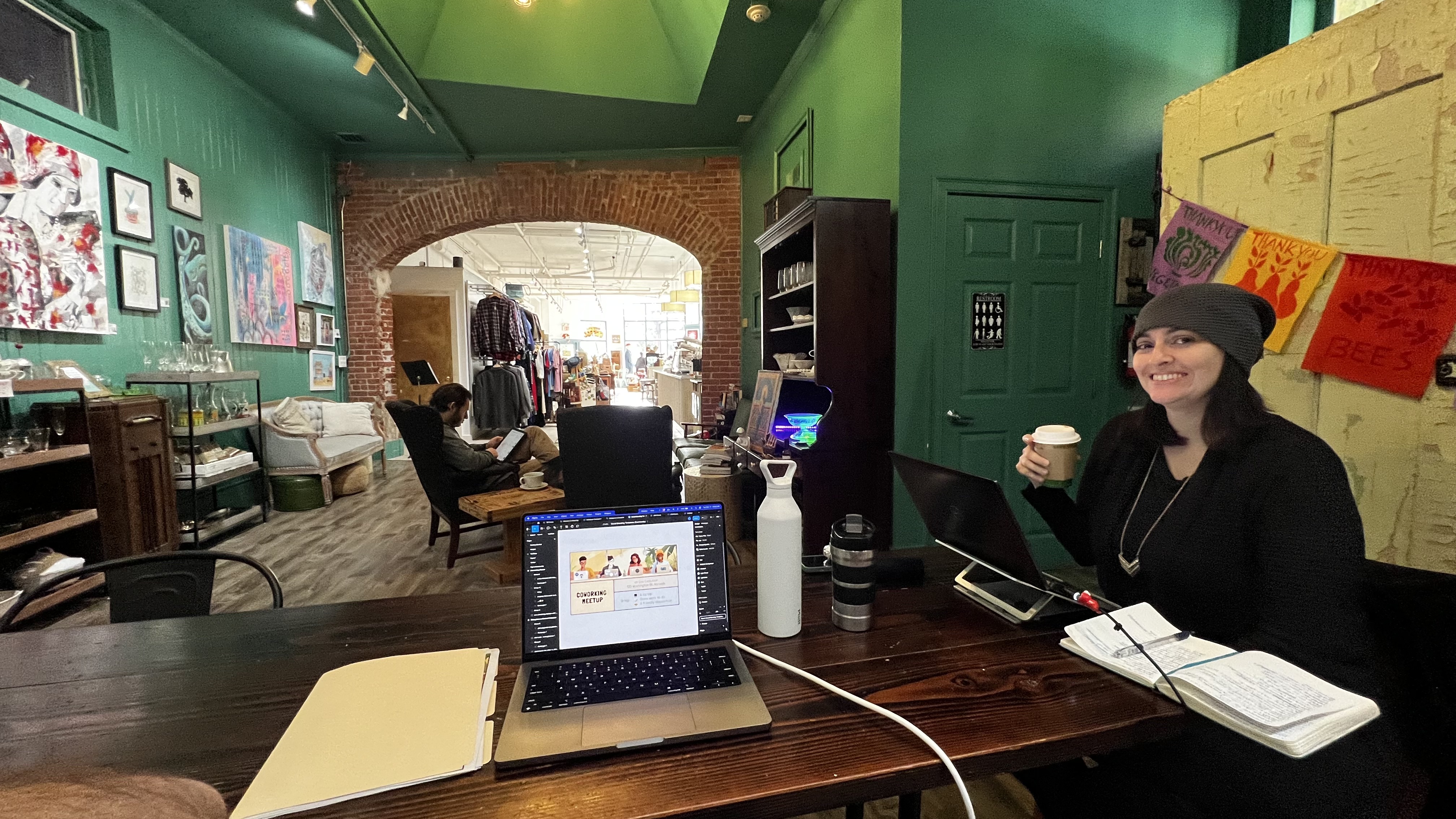Sometimes the best thing you can do is to just go back to your roots.
While I found the magic of coworking way back in 2007, most folks today have never even heard of a meaningful coworking gathering. The word is out there, sure, but it's mostly associated with WeWork and office rental. A decade of co-opting will do that to a word.
So when I started putting up flyers for a coworking meetup at my favorite local cafe, people found the concept refreshingly original.
I was lucky to discover some of the OG greats when it comes to building a wonderful coworking community back in those earlier days—and it turns out the fundamentals haven't changed.
How I got the word out
My wife and I are very new to Norwalk. We don't really know many folks here. So how do we get people to come? A few things we tried:
-
The cafe owner (Rad Brad) promoted it on his site, his socials, and his mailing list.
-
We designed and printed flyers, which we posted in our apartment building and outside the cafe.
-
I posted an event on NextDoor.
-
I messaged a few people on a local Subreddit for the area—these were people who had participated in a recent discussion about local cafes to work in.
-
I sent direct messages to a couple of the people I knew in town.
The cafe newsletter was likely the source of all of our attendees. This offers a valuable lesson for organizers: you will often find some of your first members inside of another existing community. Befriending potential collaborators and recruiting their support can be indispensable when you're just getting started.
The NextDoor event and Reddit outreach got a couple of responses—I expect they will result in a few new folks outside the cafe's usual crowd in subsequent gatherings.

How the day played out
We showed up a little before our start time of 10:00am. We got ourselves situated, rearranging the space a little to make sure there was plenty of room for everyone. We plugged in the extra power strip and got to work.
Since it was our first time out, I went in with extremely conservative expectations. I wouldn't have been surprised if no people showed up at all.
And that would be okay. The point is to put it out there, start making people aware of what's happening, and then let folks warm up to the idea over time.
It was a few hours before we got our first visitor—right around 1:00pm. Then, over the course of an hour, another appeared, and another. By the end of the day, our table was full!
Structured work sprints & breaks
As people arrived, I introduced myself and explained how we were in the middle of a work session, but that we would be breaking at the turn of the hour and that's when we'll have time to chat.
Everyone appreciated the structure—knowing that there's a designated focus time helps alleviate one of the most common concerns: can I actually focus and get work done?
While this timeboxing approach is effective working by yourself, the effect of it is multiplied in a social context. I liken it to running in a race—when the gun goes off and everyone starts running, you start running too... and the collective energy of everyone going the same direction together gives you a boost and helps you stay focused.
The periodic breaks allowed us to recalibrate: did we do the thing we said we wanted to do? No? That's okay—maybe something else came up or you just got distracted. Want to give it another go?
Our final work sprint went to 5:00pm. At 4:59, one participant suddenly burst out with a jubilant:
"DONE! One minute to spare!"
She had wrapped up two big proposals that she'd been putting off getting done.
Her reward? We all celebrated her success. (Presumably, later, there are also the benefits of the actual work.)
She made the push to get the thing done before the time ran out—and it helped her go home at the end of the day feeling much more solid about her workday than she might have if she were sitting at home on her own, putting off finishing her work and without a clear end time.

How we'll reach more people
For the next time around, I'm going to:
-
Use the photo I took at the first event. This is critical—the next round of people up the bell curve, after the earliest adopters, will be more likely to show up if they see social proof in the form of a selfie full of smiling faces.
-
Put up more flyers. In a world where everyone's competing for attention on your screen, a catchy IRL flyer stands out.
-
Do all the things we did the previous time. We'll catch some folks who couldn't make the previous one.
-
I'll practice consistency. This is perhaps the most critical component: people respond to consistent, predictable schedules. They work it into their schedules. They block out their calendars. They plan ahead.
That last item in particular is extra important. It's what will get you past a casual gathering and start building real community.
The five magic words
I heard some familiar sentiments from participants throughout the day:
I work from home all day. I need an excuse to get out.
I feel like there's nowhere I can go around here.
This is a great idea.
And, the very best thing an organizer can hear at their first gathering:
When are we doing this again?
Tuesday. Next Tuesday. Done. Lets do this!
--
Want to start a coworking meetup in your local hangout spot? Ill send you some free tips and resources to help get you started. Hit me up: tony [at] belongfulness.com